Best bread maker – the 8 top bread machines
The best bread maker will cook delicious white, wholemeal, and even gluten-free loaves. We've reviewed the top 8 from Panasonic, Russell Hobbs, and more
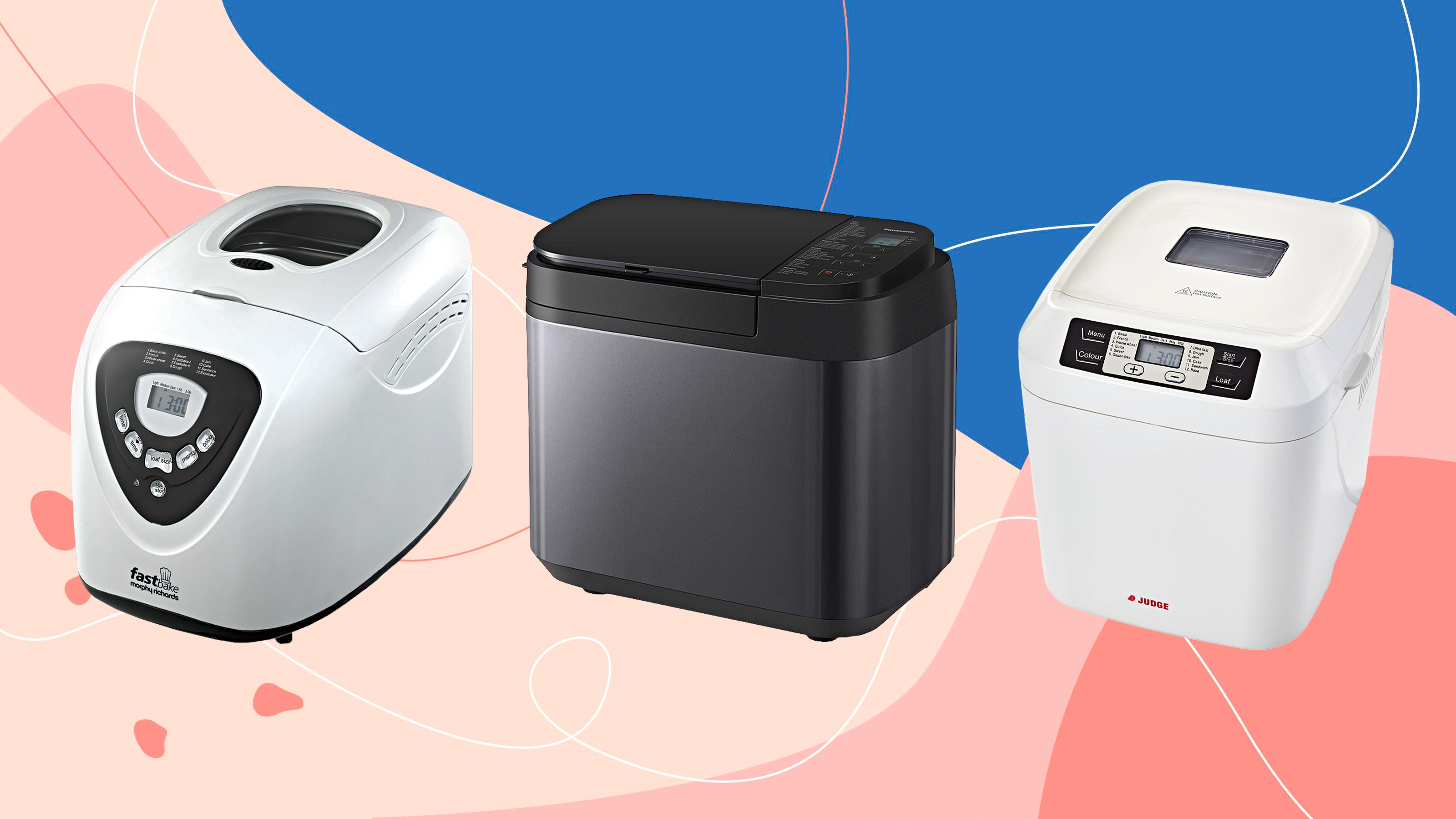

Quick Menu
Buy the best bread maker with our reviews of the top eight models from Panasonic, Morphy Richards, Tower, Russel Hobbs, and Judge. We tried each and every one of these bread machines to make loaves of white bread, wholemeal, and even gluten-free loaves. Making bread by hand is a labour of love, but after the first few minutes of kneading and the struggle of getting sticky dough out of your fingernails, it can definitely lose the initial charm.
Although you can turn to the best stand mixers to knead your loaves, there is nothing easier than adding your flour, yeast, water, and any seeds or flavourings you need to a bread maker, and pressing 'start'. Bread makers can be expensive, but when you’re able to buy bread flour and yeast in bulk they can actually be very cost-efficient machines. Homemade bread can actually cost a lot less than the supermarket alternatives, and you can eat it fresh out of the machine when it’s done. Mmm…
The quick list
Looking for a quick overview of the best bread makers around? The quick list offers all the main points you need to get an impression of the products we've tested, and further down the page you'll find more in-depth breakdowns of each machine.
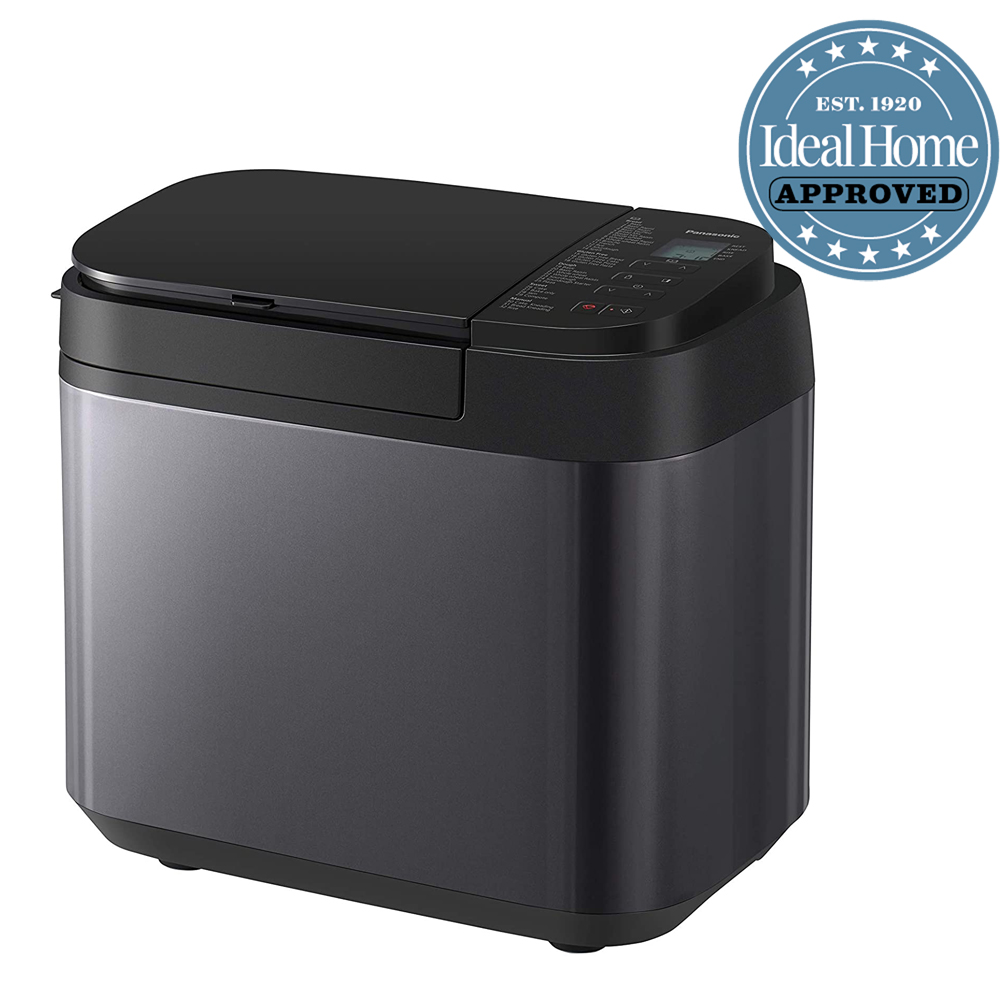
Best bread maker overall
Larger than most, this bread maker has a a top tray that can add yeast and seeds at the perfect moment. It comes with a rye kneading paddle as well as the regular paddle, and there are 32 different modes to choose from with this bread maker, including gluten free, cake, sourdough, and seeded wholemeal and white loaves.
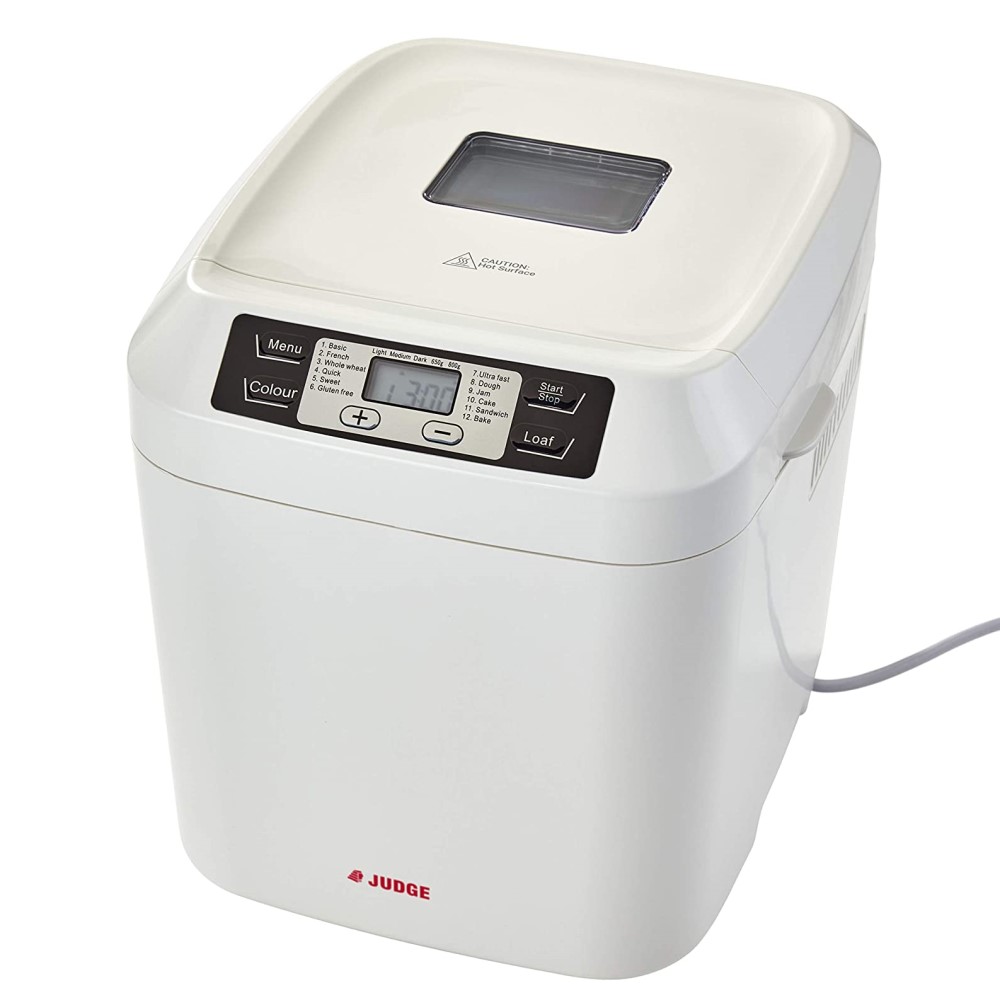
Best bread maker for white bread
You can adjust colour, size and also select from 12 modes with this machine. We enjoyed making white bread in this machine, which came out fluffy and well-risen. It also made excellent pizza dough, and is great value for something that creates supermarket-quality crusty white loaves.
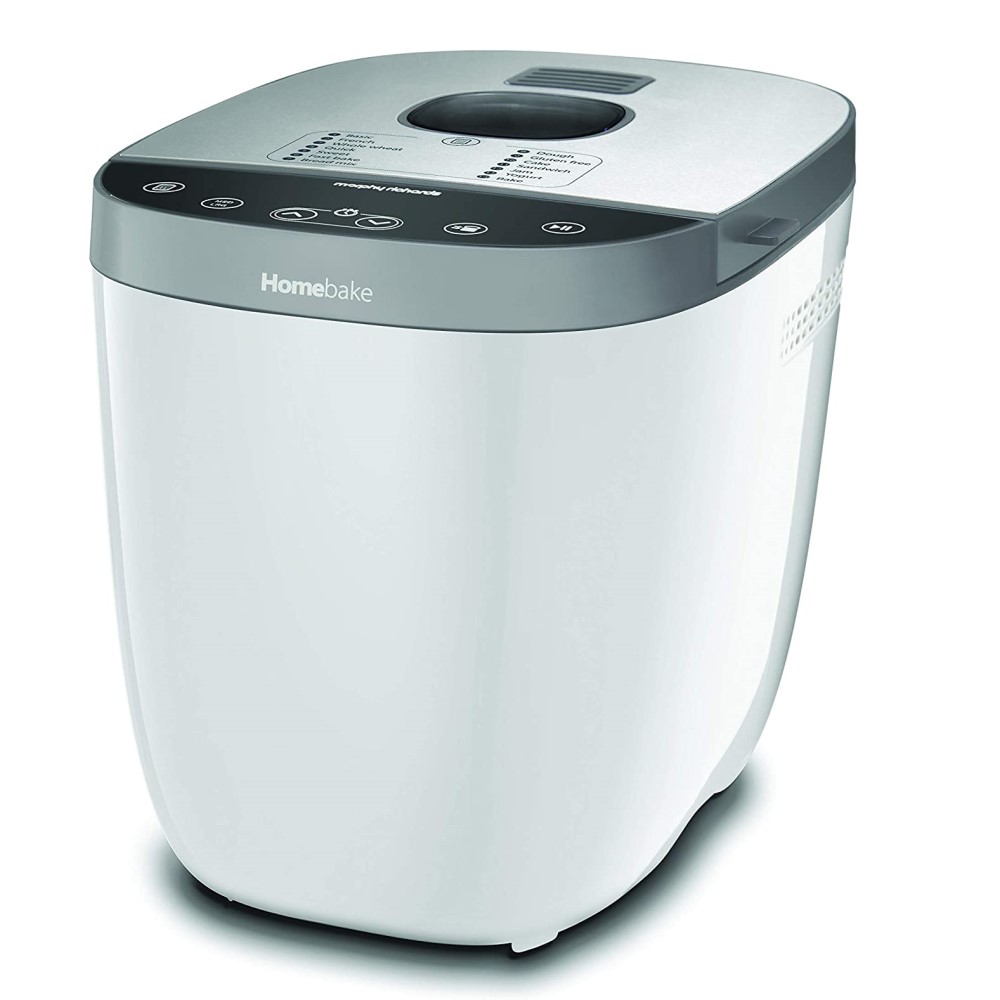
Best bread maker for home bakers
This machine comes with 14 settings and an easy-to-use control panel, featuring three brownness settings and two loaf sizes - up to two pounds. The loaf tin is non-stick and easy to clean, although you can't place it in a dishwasher. The viewing panel is also very useful.
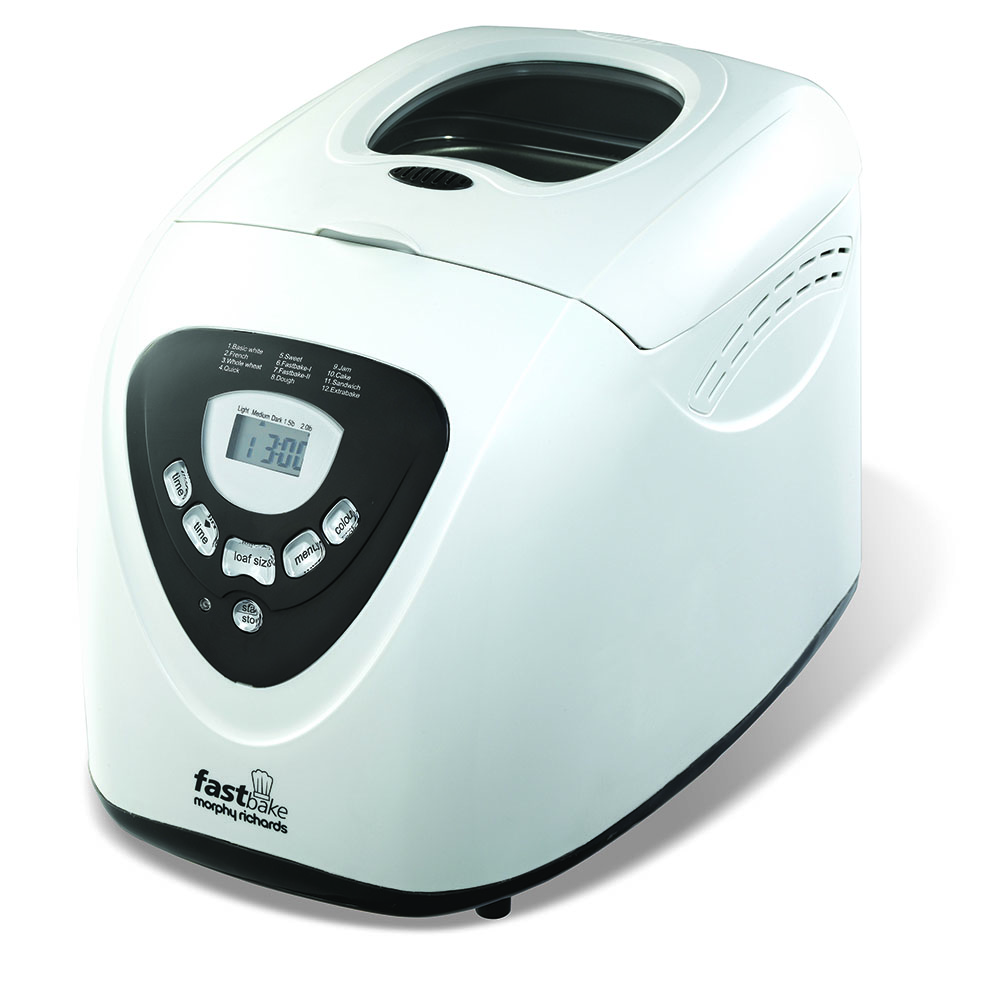
Best fast bread maker
Equipped with two rapid programmes for making a 1.5lb or 2lb loaf in less than an hour, it’s perfect for a busy lifestyle. This machine boasts 12 programmes and there’s a 13-hour delay start, 60-minute keep warm and three crust colour options.
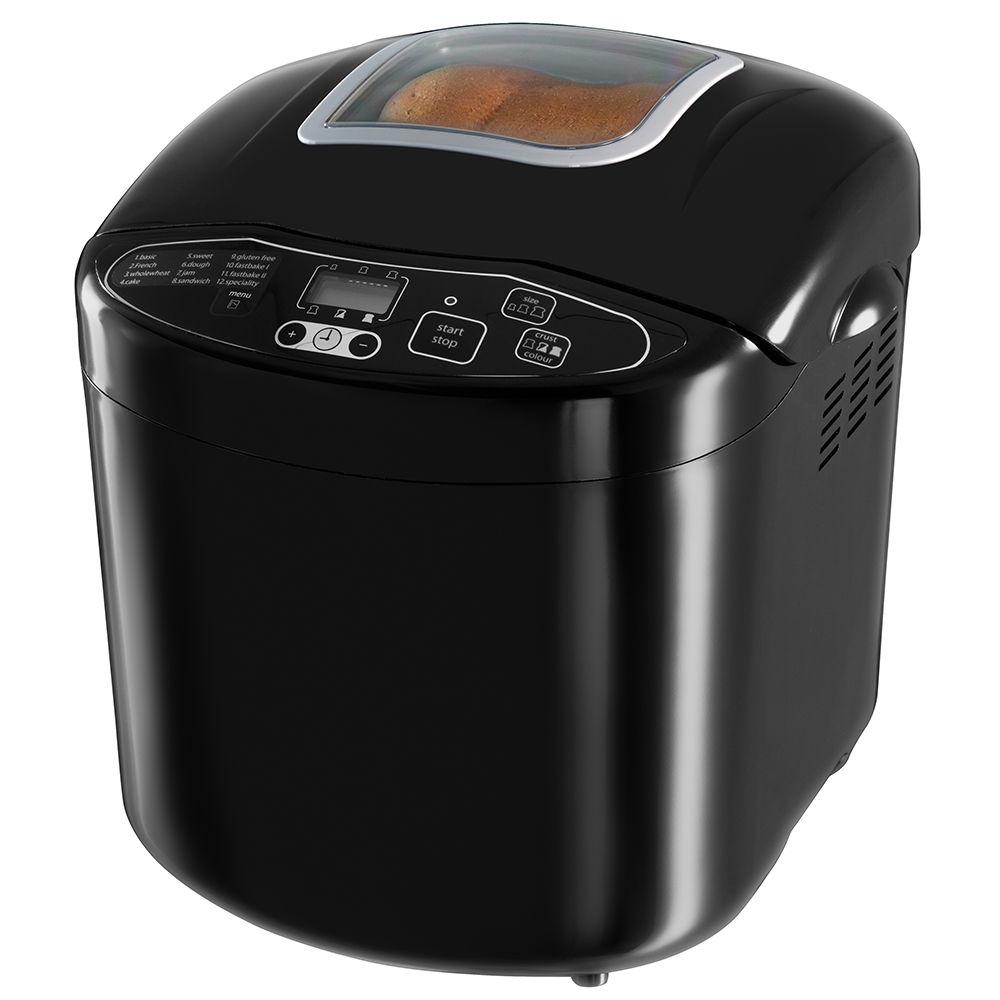
Best affordable bread maker
This bread maker has a lot of what you’d expect in a more expensive model. It has 12 programmes, including gluten-free, jam and cake, two fast bakes, 13-hour delay, optional one-hour keep warm. It can make a loaf up to 1kg, as well as 500g and 750g versions.
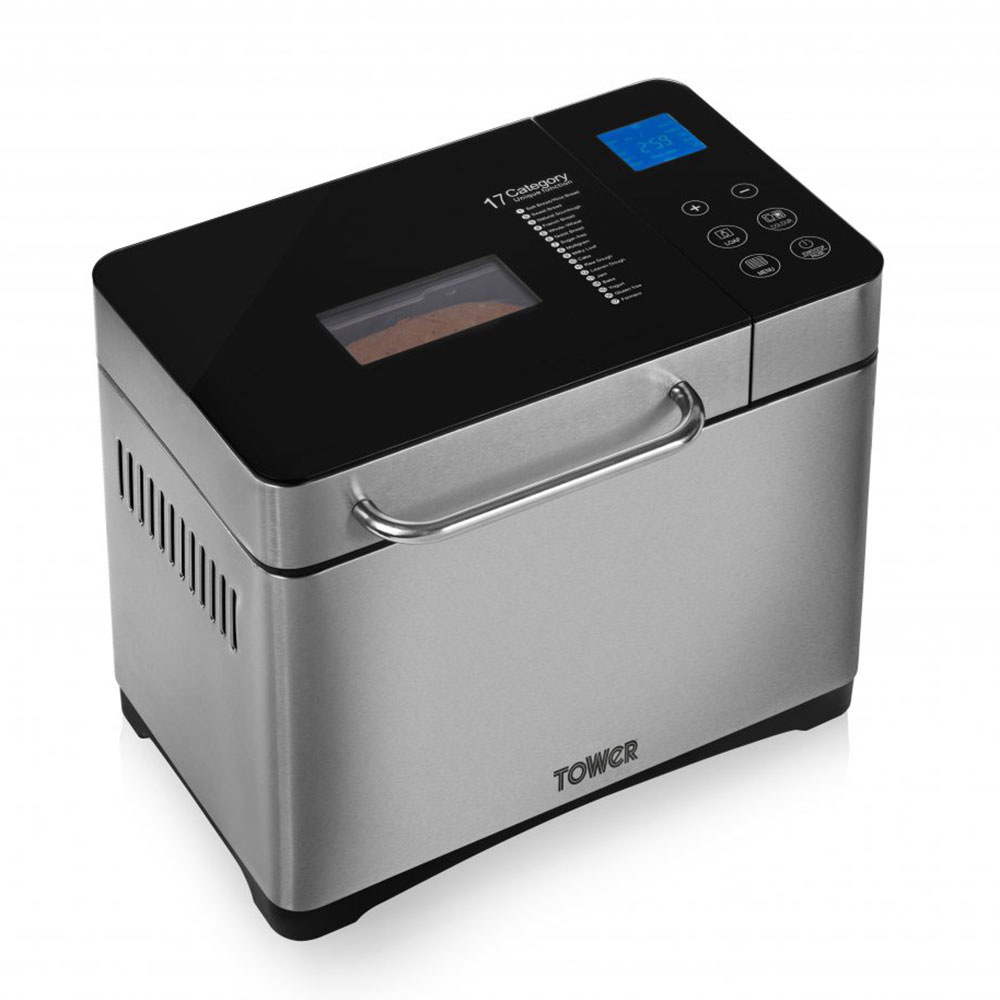
Best bread maker for great value
Three loaf sizes and three crust colours sit alongside 17 programmes covering everything from a speedy loaf in just 1hr 38mins to jam and of course, gluten-free. There’s even an automatic dispenser for extras, such as nuts. The 15-hour delay timer and 60-minute keep-warm function are great, too.
Load the next 2 products ↓
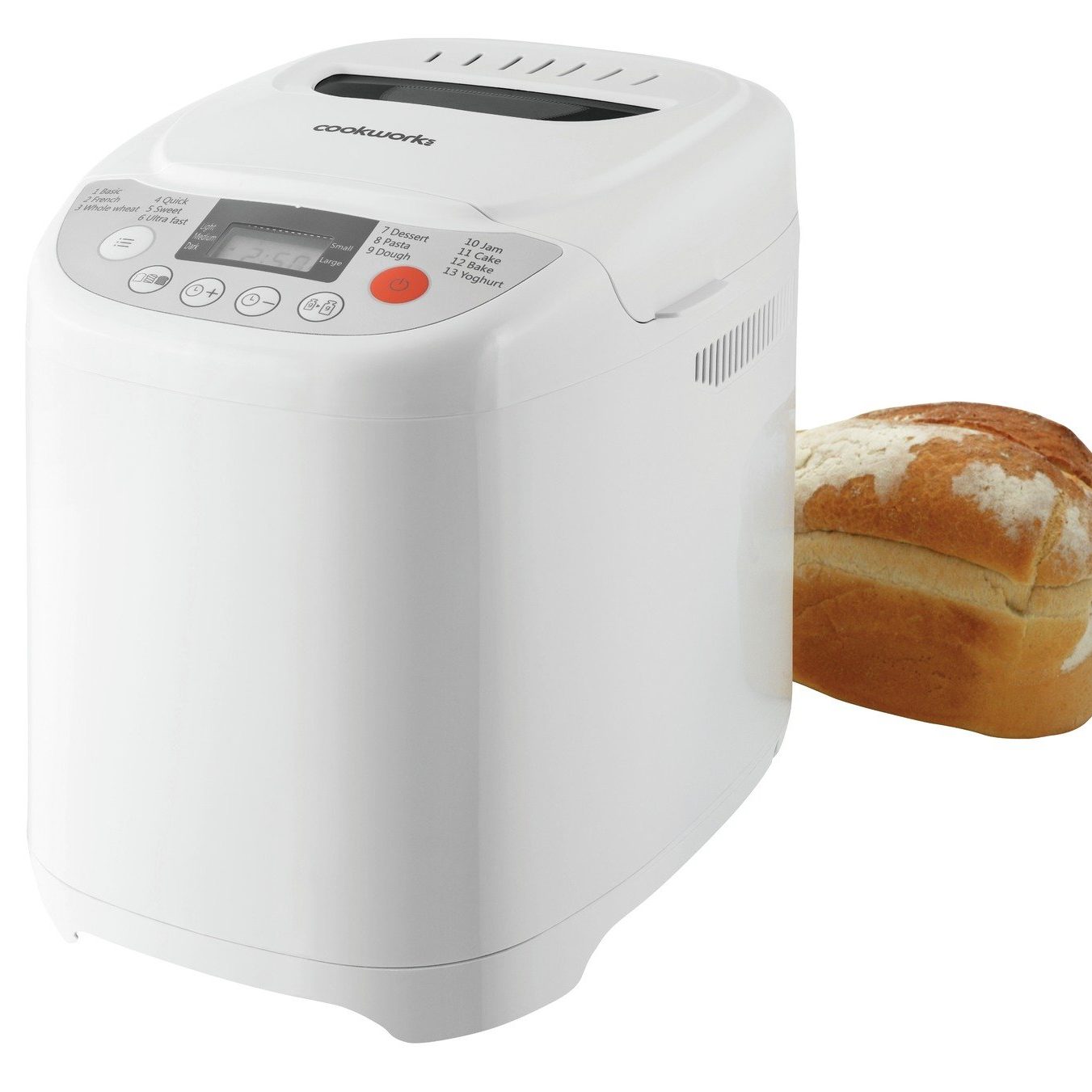
Best bread maker for budget
This bread maker is tall rather than wide, and can make small or large loaves with three crust colours. There are 12 programmes (no gluten-free but there is jam and cake). There's a 13-hour delay start, an ‘add extras’ alert, viewing window and one-hour keep warm, plus a measuring spoon and cup.
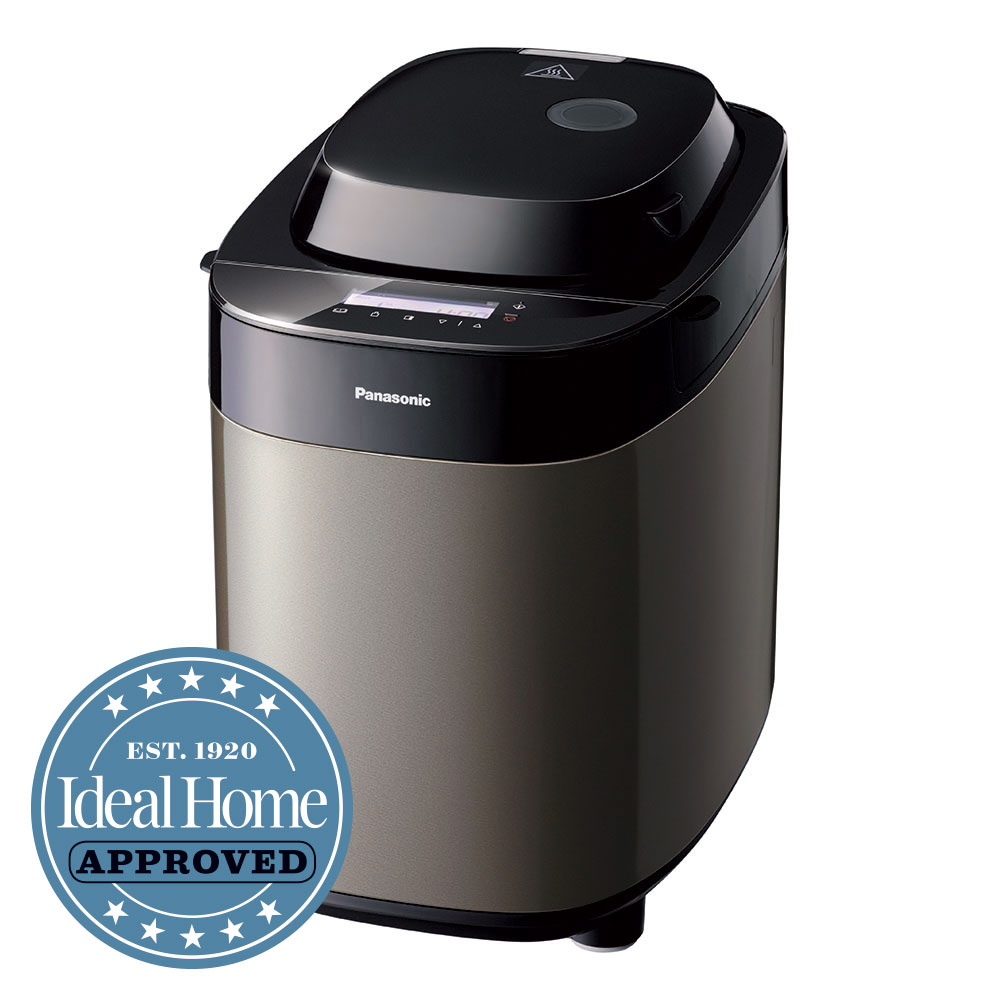
Best bread maker for gluten-free
This bread maker has 37 programmes, 13-hour delay start, yeast dispenser and three loaf size and crust options. All in all, it's a fuss-free way to turn out not just the perfect loaf, but also gluten-free bread, pasta and cakes, plus jam and compote.
Best bread makers
Best bread maker overall

1. Panasonic SD-YR2540
Specifications
Reasons to buy
Reasons to avoid
Panasonic's latest launch is the Panasonic SD-YR2540, and it's a beauty. Is is larger than most, with a top tray that can add yeast and seeds at the perfect moment. This bread maker also comes with a rye kneading paddle as well as the regular paddle, and there is a myriad of recipes included with a simple formulaic layout in the instruction book.
There are 32 different modes to choose from with this bread maker, including gluten free, cake, sourdough, and seeded wholemeal and white loaves. We tried a handful of the recipes, including the brioche recipe, which came out lusciously bronze and very well risen.
You can choose from different size and colour loaves, and follow your programme's progress using the display. This shows whether it's in the kneading, rising or baking stage. One of the things that impressed us most with the Panasonic SD-YR2540 was how quiet it is. It really does get along with any mode in near-silence, and the only noisy stage is when it empties the yeast or seed container, which makes a slight knocking noise. While not every kitchen will need something this large, it's a very impressive machine.
Ideal Home rating: 5 out of 5 stars
Read our full Panasonic SD-YR2540 review
Best bread maker for white bread
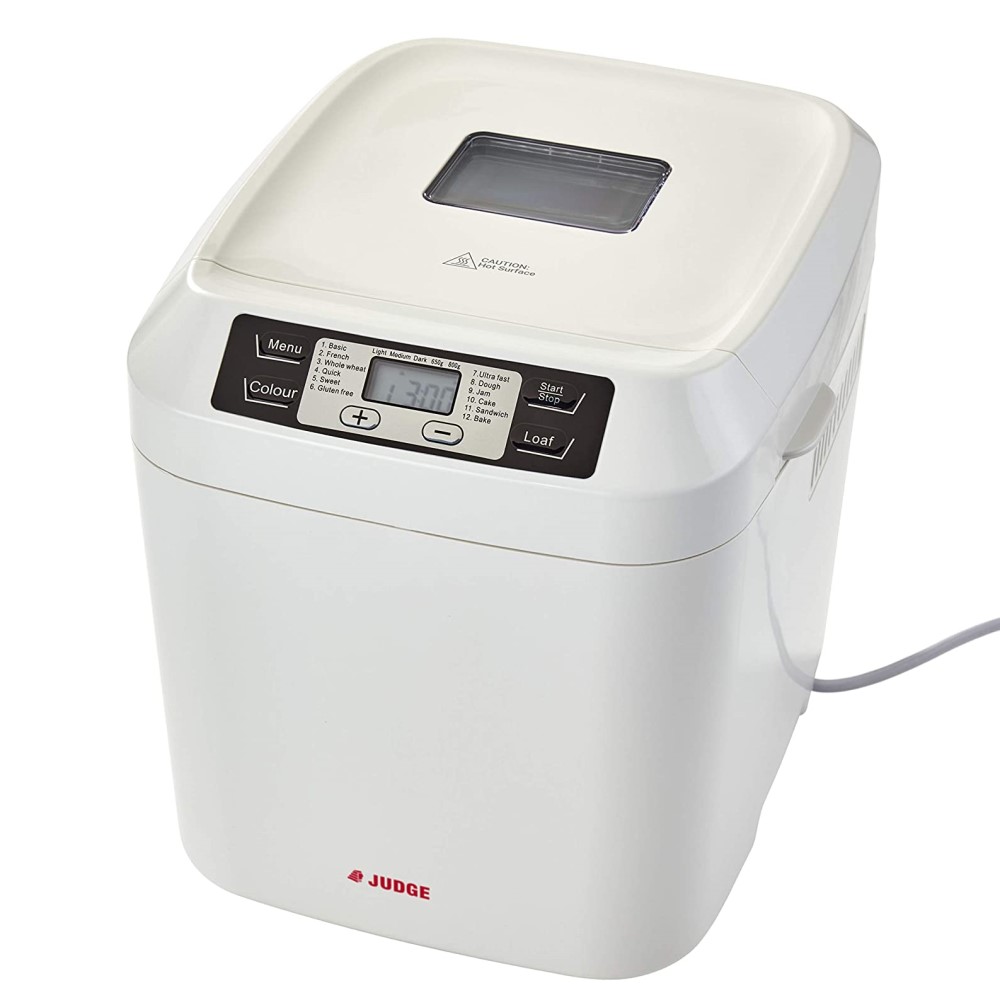
2. Judge Electricals Digital Bread Maker
Specifications
Reasons to buy
Reasons to avoid
You can adjust colour, size and also select from 12 modes with the Judge Electricals Digital Bread Maker. We enjoyed making white bread in this machine, which came out fluffy and well-risen. So well-risen in fact that it made contact with the viewing mirror, leaving a slight dent in the top of the bread maker.
The Judge Electricals Digital Bread Maker also made excellent pizza dough, and it is effective at turning out speedy recipes in time for dinner or even a pizza party. It does beep loudly between each stage of the process, letting you know that the proving process is over and that baking is beginning. We weren't convinced that this step was necessary, and the actual kneading is quite loud.
Aesthetically it's not the prettiest bread maker in this buying guide by a long shot, but it's great value for something that creates supermarket-quality crusty white loaves.
Ideal Home rating: 4 out of 5 stars
Read our full Judge Electricals Digital Bread Maker review
Best bread maker for home bakers

3. Morphy Richards Homebake Breadmaker
Specifications
Reasons to buy
Reasons to avoid
When putting the Homebake to the test we loved the recipes it came with. They gave us beautiful loaves every time, and were very versatile. Even the gluten free loaf was a triumph! The Morphy Richards Homebake Breadmaker comes with 14 settings and an easy-to-use control panel, featuring three brownness settings and two loaf sizes - up to two pounds. The loaf tin is non-stick and easy to clean, although you can't place it in a dishwasher.
At 36 x 26.5 x 28.5 cm this bread maker is easy to store. It's also one of the nicer looking bread makers you can buy, and the viewing panel comes in very useful. One issue we encountered was with the paddle, which occasionally fell flat and interrupted our bake. There was also one issue with the tin itself, which jolted out of place mid-bake. If you don't plan on leaving the bread maker unattended for long periods of time then this won't be too much of an issue, as you can check in and amend any issues, but the Homebake did prove to be a bit of a high maintenance machine.
Ideal Home rating: 3.5 out of 5 stars
Read our full Morphy Richards Homebake Breadmaker review
Best fast bread maker

4. Morphy Richards 48281 Fastbake Bread Maker
Specifications
Reasons to buy
Reasons to avoid
Hate waiting? The Fastbake is the bread maker for you. Equipped with two rapid programmes for making a 1.5lb or 2lb loaf in less than an hour, it’s perfect for a busy lifestyle. This machine boasts 12 programmes that include wholewheat, French, sweet, cake, jam and dough.
There’s also a 13-hour delay start, 60-minute keep warm and three crust colour options. There’s no gluten-free setting. However, there are instructions on making gluten-free bread and cakes using the other programmes. There’s also no extras dispenser but it will sound an alert when you can add ingredients. Two spoons and a cup make measuring simple.
While there’s no button for it, the machine can be used to make a 1lb loaf but on the 1.5lb setting. However, making sure you stick to the right quantities for the recipe can be a challenge. In testing, it wasn’t as easy as some to programme. The buttons aren’t in a logical order.
This bread maker was used to make a 1.5lb white loaf on the basic programme. While it wasn’t too noisy, it beeped loudly when it was ready for extras. The action isn’t shown on the display so first-time bakers might wonder what it wants.
The loaf rose and baked well, and stayed crisp on the keep warm setting. It came out of the pan easily. However, the paddle had to be dug out and there was some unmixed flour on one corner.
Ideal Home rating: 4 out of 5 stars
Best affordable break maker

5. Russell Hobbs Compact Black Bread maker
Specifications
Reasons to buy
Reasons to avoid
There’s a tendency to think of affordable appliances as lacking in features. However this bread maker has a lot of what you’d expect in a more expensive model. It has 12 programmes. These include gluten-free, jam and cake, two fast bakes, 13-hour delay, optional one-hour keep warm.
Despite its small size, this bread maker can still make a loaf up to 1kg, as well as 500g and 750g versions. There’s a viewing window, an alert to add extras, buttons with icons as well as words, and a dishwasher-safe paddle. Its black glossy finish feels more premium. As it’s compact, it won't hog the worktop.
On the downside, while the buttons are straightforward, there are a few quirks. For example, the crust settings don’t make much sense. Light appears on the LCD display as L, but medium and dark are P and H. There’s no measuring spoon and cup, and the pan pushes, rather than twists, into place. This needs a sharp yank to get it out.
In testing, the 750g white loaf rose incredibly well. But while the sides and bottom were sufficiently browned, the top was pale, despite it being set for the darkest crust. The loaf came out of the pan easily but the paddle tore a hole. It was still a fluffy loaf, but its two-tone look somewhat let it down.
Ideal Home rating: 3 out of 5 stars
Best bread maker for great value

6. Tower Gluten-free Digital Bread Maker
Specifications
Reasons to buy
Reasons to avoid
A stylish design with features galore, this affordable bread maker delivers plenty of bang for your buck. Three loaf sizes (listed in the instructions as 1lb, 1.5lb and 2lb but, confusingly, on the control panel they’re 500g, 750g and 1kg) and three crust colours sit alongside 17 programmes covering everything from a speedy loaf in just 1hr 38mins to jam and of course, gluten-free.
There’s even an automatic dispenser for extras, such as nuts and raisins, though it has to be removed and replaced at the beginning of each bake, rather than a permanent dispenser that can be added to throughout. A 15-hour delay timer and 60-minute keep-warm function is great for fitting around a busy lifestyle, too.
What’s especially good about this model is that it’s sleek enough to have out on the worktop. As well as a brushed stainless-steel exterior to help prevent fingerprints and a large viewing window, there’s a touchscreen instead of buttons and an LCD display. Annoyingly, the display only stays lit while it’s being programmed, so it’s hard to see at a glance how much time it has left, especially on a sunny day.
During testing it functioned effectively – while being one of the noisier models we tried as it mixed, especially with heavier dough, it produced a well-risen 2lb loaf, which was consistently browned. There were a few traces of flour lumps on the side, and loose flour thrown into the baking chamber but it came out of the pan easily and sliced well.
Our gluten-free loaf was more challenging. The programme had plenty of mixing built into it, so there weren’t clumps of ingredients left behind, which can be a common problem. However, it didn’t rise as well as hoped, so the loaf was dense, and browner on the sides than on the top even though we baked using the dark crust option.
That said, it was an easier, and less messy, process than making gluten-free bread by hand, so for saving time on that, it’s a win.
Ideal Home rating: 4 out of 5 stars
Best bread maker for budget

7. Cookworks Breadmaker
Specifications
Reasons to buy
Reasons to avoid
While it’s not billed as compact, this basic bread maker is relatively small. This makes it a good buy for a space-poor kitchen. The size is reflected in its pan, which is tall rather than wide, and can make small (1lb) or large (1.5lb) loaves with three crust colours.
There’s a decent amount of versatility with 12 programmes (no gluten-free but there is jam and cake). There's a 13-hour delay start, an ‘add extras’ alert, viewing window and one-hour keep warm, plus a measuring spoon and cup. For all that, it’s probably a better bet for previous bread maker owners, rather than newbies. This is because the instructions and recipe book are poorly written.
Another quirk is two programmes that deliver speedy baking (Ultra Fast and Quick). There is no discernable time difference between them (both just under two hours). In testing, it was used to make a small loaf on the basic white setting with a dark crust.
One frustration was the lack of conversion to grams for flour in the recipe. The measurement was only available in cups. This means if you’ve mislaid the cup, you’re left with guesswork. The bread maker also had an annoying whine as it kneaded. However, it didn’t get too warm on the outside and produced an evenly browned loaf. It hadn’t risen as well as hoped, but was acceptable and came out of the pan easily.
Ideal Home rating: 3.5 out of 5 stars
Best bread maker for gluten-free

8. Panasonic SD-ZX2522
Specifications
Reasons to buy
Reasons to avoid
Here's a fuss-free way to turn out not just the perfect loaf, but also gluten-free bread, pasta and cakes, plus jam and compote. Introducing the SD-ZX2522. This bread maker has 37 programmes, 13-hour delay start, yeast dispenser and three loaf size and crust options. It should have a snappier name, like The Ultimate Bread, Pasta and Cake Machine.
If you fancy getting creative, it has a preset and accessories for making your own sourdough starter. This is alongside a separate raisin/nut dispenser and rye bread paddle. Touch panel controls and a sleek steel finish also mean you won’t mind having it out on the worktop.
The downside is that this bread maker is quite tall, so only just squeezes below some wall cabinets (although this minimises its footprint). Also, there’s no viewing window and it’s pricier than most. Its parts aren’t dishwasher-safe. There’s a lot of information in the instructions – this could feel overwhelming to a baking newbie.
However, the bread maker was easy to use. In testing, it was ultra-quiet even when kneading with purpose. It made a basic large white loaf over four hours, although there’s also a rapid option if you want it faster. The outside of the machine grew warm but not hot. The finished loaf was well-risen with a light, fluffy interior. A sure-fire choice for better bread every time.
Ideal Home rating: 5 out of 5 stars
How to choose the best bread maker
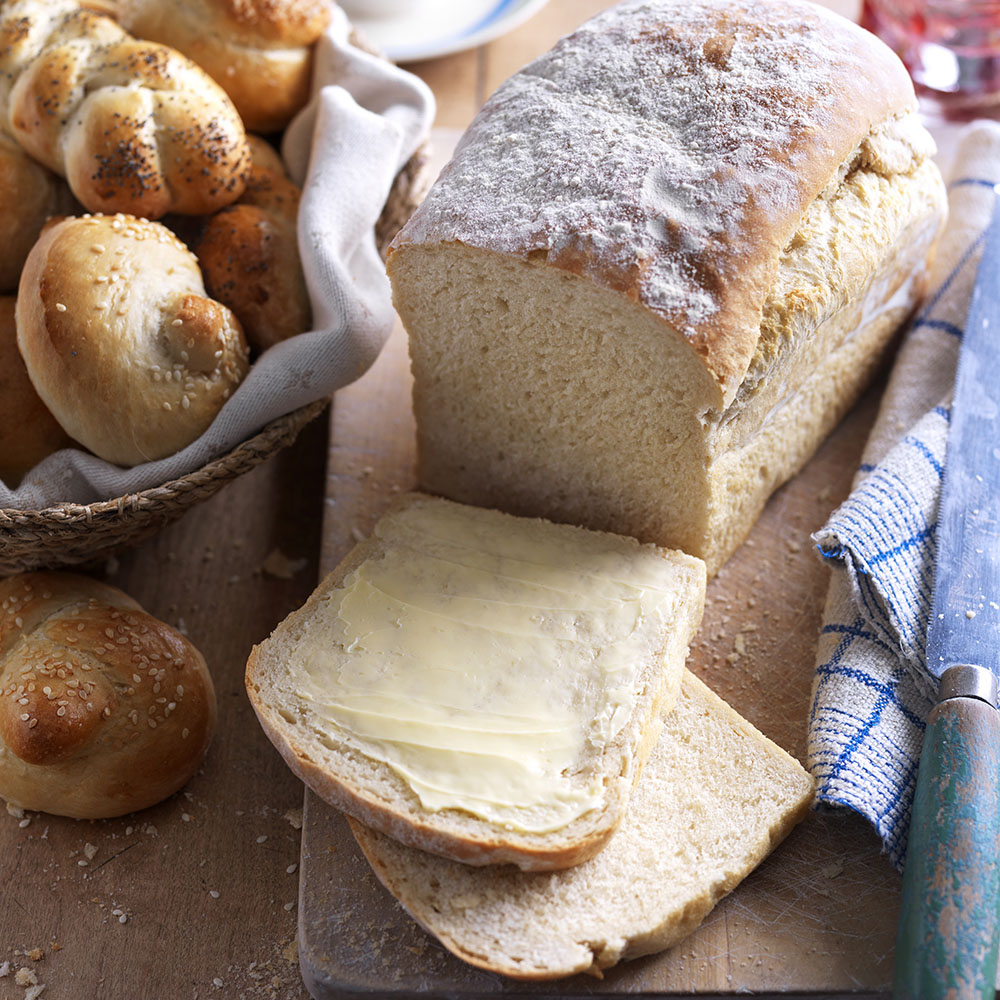
Using a bread maker means all the hard work is done for you. But there are a few differences to conventional baking. Bread makers have a non-stick pan with a handle to lift it out of the machine. The usual shape produces a shorter, wider loaf than shop-bought.
1. Loaf size
Most machines will make three sizes of loaf, with compact models often offering two. These are usually labelled as a general size, eg medium, large or extra large. Loaves may also be measured in pounds, eg 1lb, 1.5lb and 2lb, or in grams, ie 680g, 900g, 1kg.
2. Dough paddle
One thing that bread maker-baked loaves have that homemade bread doesn’t is a hole in the bottom. This is down to how the bread is produced – the dough is mixed and kneaded by a paddle that stays in place. Some paddles can be easily removed while others have a tendency to stick. Although, there may also be a tool to help you free it from the loaf.
Alternatively, look for a model with a paddle that collapses before baking. Bread makers can be bulky, so balance the size of the machine with how much you plan to bake.
Larger machines will make bigger loaves but require more space. It’s a good idea to make your bread maker a permanent worktop resident. This is simply because storing it away means you’re less likely to use it regularly.
3. Viewing window
Some, but not all bread makers will have a viewing window so you can check on your dough’s progress. It’s essential that you don’t lift the lid to look as this lets heat out as it’s proving or baking.
4. Programmes
Check how many programmes each bread maker has – more affordable models may only have 11 or 12. Premium designs can have as many as 37. At the basic end, these should include white, rapid bake (for speedier bread), wholemeal, brown, knead only (for bread rolls, focaccia or pizza) and bake only.
High-end bread makers may include settings for sweet breads, rye, spelt, gluten-free breads, pizza dough, cake, jam and pasta. These extra programmes can help you get more use out of your bread maker.
Each programme will calculate the temperature and baking time and/or function. There should be an option for selecting how brown you prefer the crust to be, and a delay start. This allows you wake up or come home to fresh bread or make sure you’re there to remove it.
This setting won’t always be suitable if you’re baking with ingredients that can spoil, such as eggs. Up to 13 hours is average, which includes the time the bread takes to be made. A default keep warm is a handy option if you’re not around to take the bread out. This maintains enough heat inside the pan to prevent condensation being absorbed by the loaf as it cools.
5. Recipes
There should be some recipes to get you started. For the best results, stick to these until you become familiar with the machine. Most have accessories, such as spoons, tiny yeast scoops or cups, to help you measure each ingredient. Bread making is more of a science than most cooking. This means that varying quantities affects how your loaf looks and tastes, so use these where they’re provided.
Another accessory some machines have is a fork-like paddle for kneading less elastic rye bread. Bread makers have different ways to add ingredients. This may be a pause button so you can add them when you want. Or, a specific time in the programme with an alert.
Alternatively, the machine can have an automatic dispenser that tips in fruit, nuts and seeds. There may also be a dispenser for adding yeast after initially mixing. This prevents the yeast activating too soon.
FAQs
How much should I spend on the best bread maker?
A basic bread maker can cost as little as £50, with more premium models costing more than £200. Consider what’s important to you when deciding how much to spend. A higher price tends to mean more features and versatility, rather than necessarily corresponding to performance.
If all you plan to make is a mix of white or wholewheat loaves, a sub-£80 machine should fit the bill nicely. Do you want to experiment with different flours and recipes, such as sourdough? Then you will get more out of a premium appliance. Plus, it’s likely to have a longer lifespan.
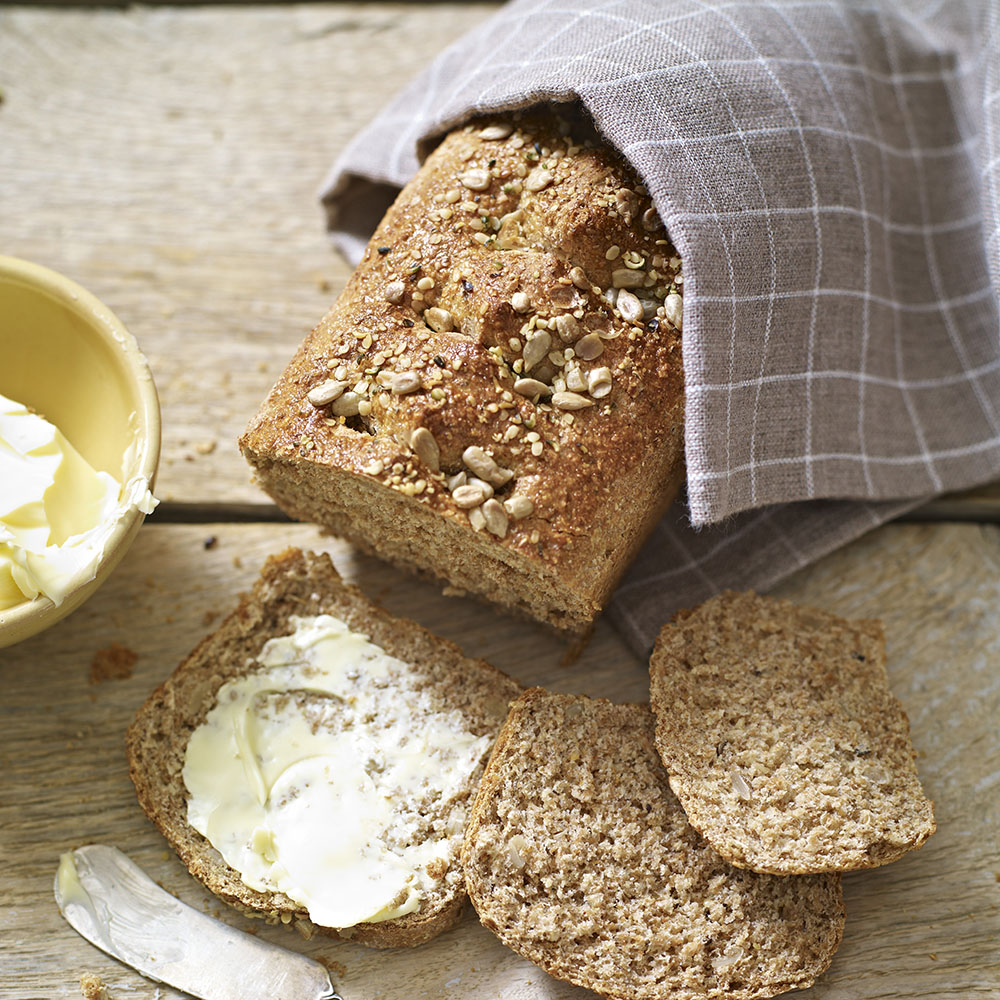
Are bread makers easy to clean?
Most pans and paddles aren’t dishwasher-safe, so need to be cleaned by hand to prevent the coating from being eroded. Kneading paddles can get stuck on the spindle, so try soaking in warm water to remove them. The paddle’s hole can get clogged with baked-on bits of bread or flour. Clean this thoroughly – a toothpick is useful for removing residue.
Does the bread maker have well-insulated walls?
All machines will grow warm on the outside as they bake but some will be hotter than others.
How long will each loaf take to make?
It can take three to four hours to produce a white loaf not using rapid bake, and three to five hours for wholemeal. You’ll need to be present to remove the loaf, even if there’s a keep warm option. Therefore it’s a good idea to plan ahead. If your bread maker has a rapid bake option, check the duration of the programme. Bread doesn’t like to be rushed, so the longer the programme is, the better the loaf.
Are bread makers noisy?
Some machines will be almost silent while they’re mixing and kneading while others make more noise. If you’re a light sleeper, look for a quiet model that won’t disturb you early in the morning.
Get the Ideal Home Newsletter
Sign up to our newsletter for style and decor inspiration, house makeovers, project advice and more.

Rachel Ogden is a freelance journalist with more than 20 years’ experience of writing, editing and sub-editing. Since 2007, she's worked exclusively in interiors, writing about everything from extending your home to kitchen worktops, flooring, storage and more. She specialises in product reviews, having reviews hundreds of small and large appliances and homeware.
-
 I finally got my hands on the sellout Morris & Co armchair from Habitat, and it looks even better in person
I finally got my hands on the sellout Morris & Co armchair from Habitat, and it looks even better in personIt's back in stock, and well worth the wait
By Rebecca Knight
-
 How to stratify seeds – gardening pros swear by this secret to a thriving garden
How to stratify seeds – gardening pros swear by this secret to a thriving gardenThis little-known secret is a must for a lush garden this year
By Kayleigh Dray
-
 Cinema sofas are this year's breakout furniture trend, but are you a fan of this controversial sofa style?
Cinema sofas are this year's breakout furniture trend, but are you a fan of this controversial sofa style?Let us know in the comments
By Rebecca Knight